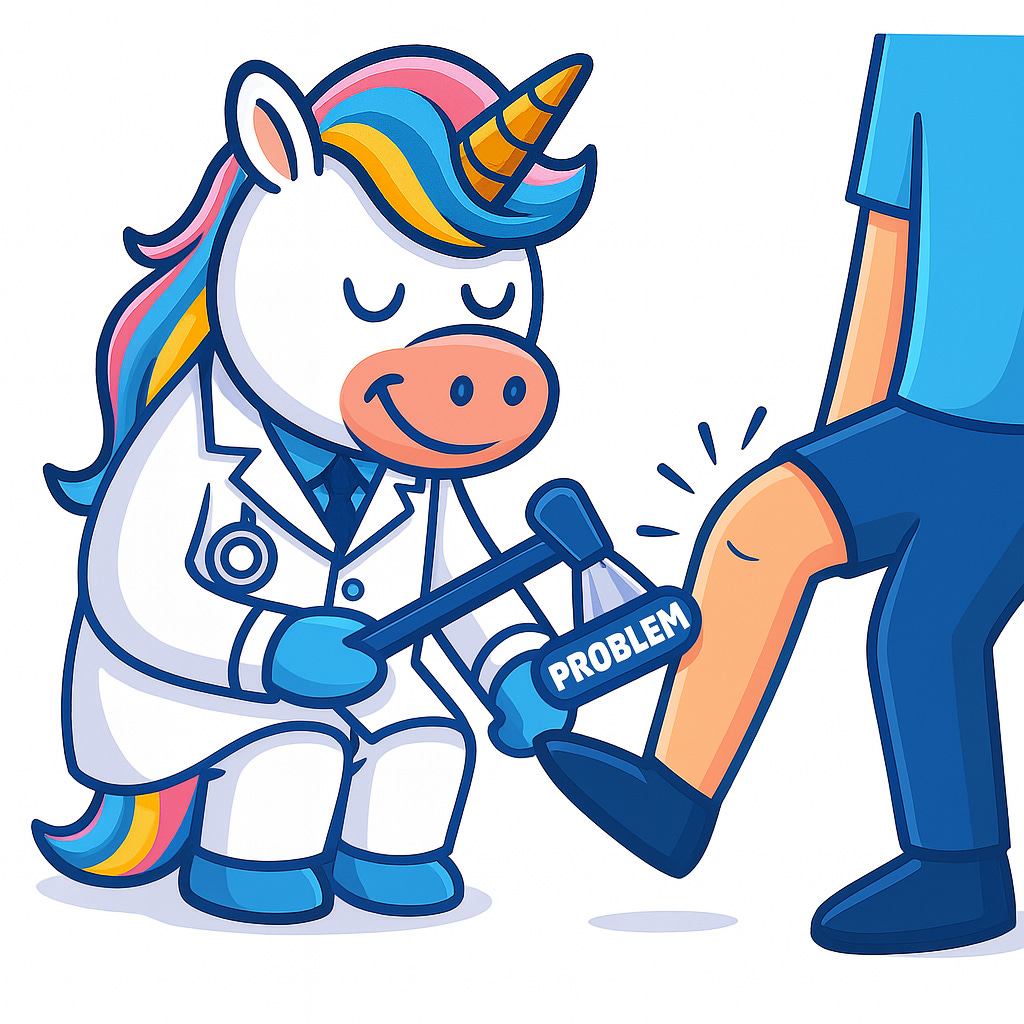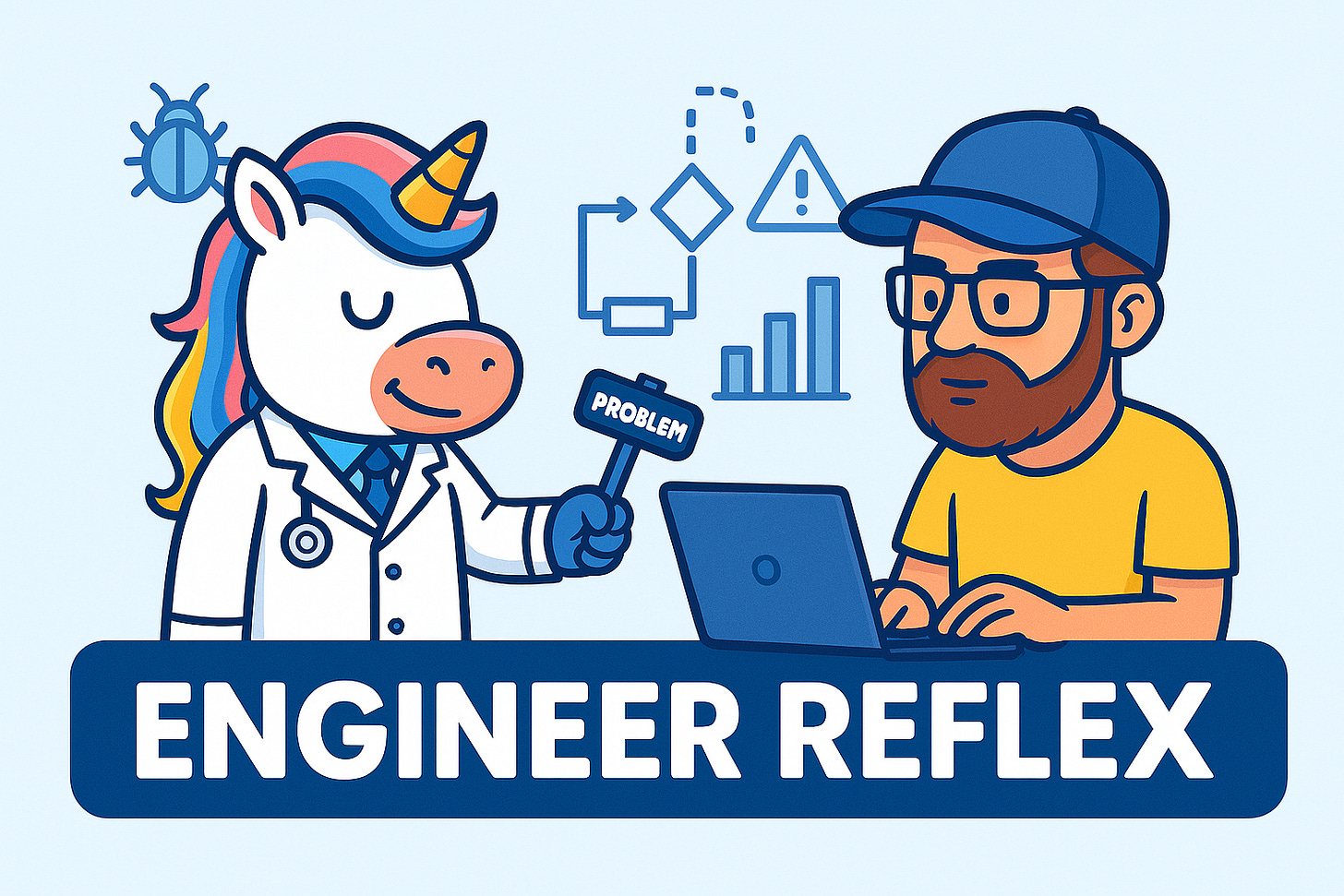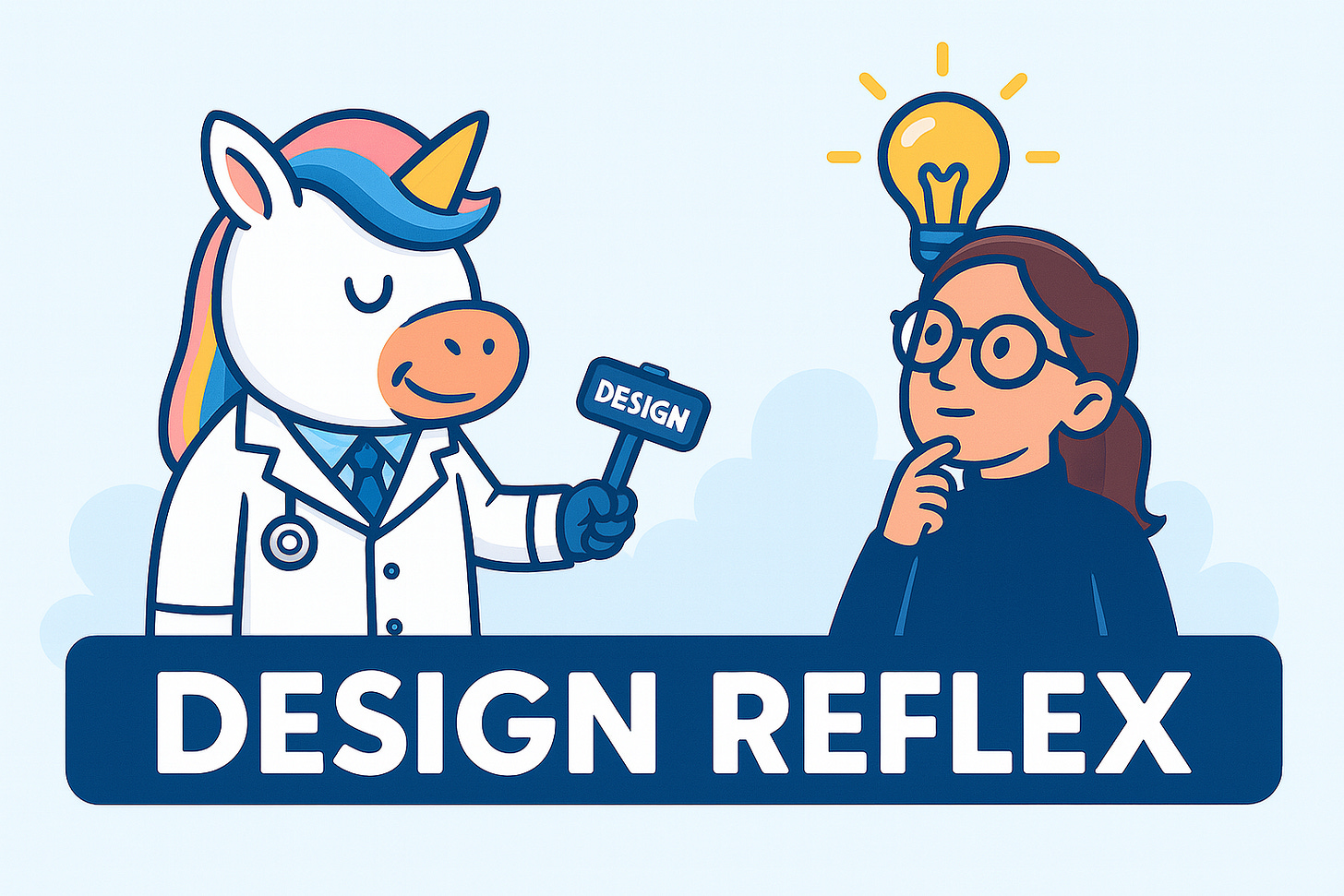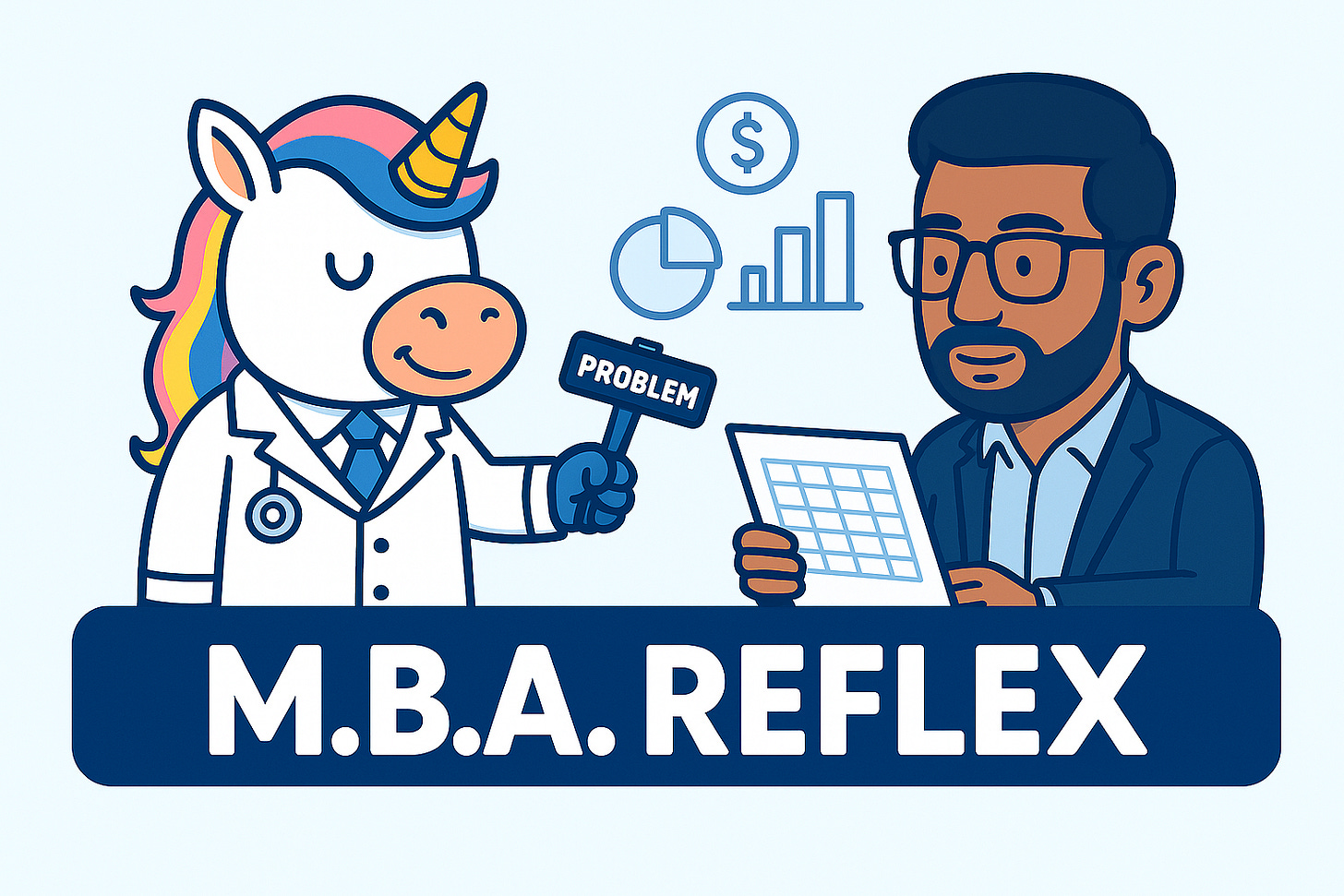What is your founder reflex?
Common pitfals for engineers, designers and MBAs in building a startup.
🎧 This edition has an audio version which contains more examples and extra explanations. Also available on Spotify and iTunes 🎙️
When founders face a problem, they can default to a reflex. These reflexes aren't conscious or deliberate: they’re shaped by background, training, and personal comfort zones.
I see three common ones in the wild: the engineering reflex, the design reflex, and the MBA reflex.
Startups are a unique type of problem, where there’s not one reflex that always applies. Each reflex brings something powerful to the table. But each also has a predictable blind spot.
If you’re not aware of your own reflex — or your team’s collective reflex — you can end up solving the wrong problem, framing it too narrowly, or optimising for a business that doesn’t yet exist.
Let’s take a look.
🧠 1. The Engineering Reflex
“What can we build to solve this?”
You’ll hear this when a technical founder encounters ambiguity — and their instinct is to open a code editor. It might be a CRM problem, a growth problem, or a product adoption issue. The reflex is: “Let’s build that.”
This mindset often comes from years of seeing systems solve real problems. It’s a genuine strength: a fast way to make the abstract tangible. But it also carries the danger of building your way past the actual problem.
Example:
I’ve seen teams build dashboards instead of defining the decisions that need to be made. Or teams building integrations with external APIs mentioned in sales calls, before deliberating if it was deeply necessary to convert the customer.
Pros:
Fast to action: You’re not theorising — you’re shipping.
Building reveals technical gaps, workflow issues, and edge cases quickly.
Cons:
Overbuild risk: Premature solutions can become sunk costs and reduce agility.
Solves symptoms: You may be solving what’s visible, not what’s vital.
Avoids human behaviour: engineers are often not trained to include human actors in their designed systems. Early-stage, this can be a startup killer.
Watch out for:
Building a beautiful machine that nobody needs — or masking strategic confusion with technical velocity.
🎯 2. The Design Reflex
“What’s really going on here?”
This shows up when a founder leans into the ambiguity instead of rushing to resolve it. You’ll hear: “Let’s map the journey,” or “Let’s understand the user better before we decide.”
The reflex is to zoom out before narrowing in, common in most design schools. In a messy space, that’s valuable. But when overused, it can slow down decisions as you are just lounging in your vision’s hammock.
Example:
I’ve watched a team work on their vision and landing page for two weeks. I saw vague buzzwords, but they were absolutely delighted and saying they finally made things more concrete. When they showed it to a potential customer, his response was: “I still don’t understand what you do”.
Pros:
Is trained to understand humans, or at least acknowledge their part in the equation
If excellent, captures nuance: Surfaces latent needs, context shifts, and behavioral contradictions.
Flexible and adaptive: Opens up more solution space before committing.
Cons:
Slow to converge: Can loop in analysis without concrete next steps.
Hard to communicate progress: “Understanding” isn’t always legible to investors or teammates.
Can’t ship: concepts stay on the drawing board for too long
Watch out for:
Getting stuck in the exploration loop — or generating insights as a reason not to commit.
Free 20 minutes mentoring
Need a sounding board for your startup? First 20 minutes are always free, no strings attached. Book your call now, or check out my prices here.
📊 3. The MBA Reflex
“What’s the business model here?”
You’ll hear this when someone jumps straight to revenue streams, CAC/LTV, or market size. Their instinct is to map the opportunity — even if the customer side isn’t nailed down yet.
This reflex often comes from consulting, finance, or business school training. It’s great for thinking structurally and for aligning investors. But it can also lead to abstract strategy that doesn’t survive contact with the market.
Example:
A founder once showed me a pristine financial model for a product they hadn’t launched yet — complete with 5-year projections. They had an investor spending plan for a product that was hardly defined, aiming to raise €1M. The level of detail was too high.
Pros:
Doesn’t cry to make a spreadsheet.
Forces clarity: Pushes for sharp definitions of value, growth, and monetization.
Speaks to funders: The language of markets, margins, and moats lands well with investors.
Scales well: Helps think about repeatability and business mechanics early.
Cons:
Assumes too much: Strategy often assumes desirability and usability are already in place.
Scale first: most MBAs are trained on theories on management, an issue home to large organisations. Startups aren’t initially. Therefore, sometimes, they think too big.
Optimizes fantasy: You can make a spreadsheet work for anything — including non-existent demand.
Ignores mess: Real-world behavior is often irrational or nonlinear, and doesn’t fit cleanly into models.
Watch out for:
Optimizing a business that hasn’t yet proven it solves a meaningful problem.
So what now?
None of these reflexes are bad. In fact, each one can be a superpower in the right context. But when you lean too heavily on one reflex — or don’t realise which one it’s stuck in — trouble follows:
The engineering reflex builds before it understands.
The design reflex understands before it commits.
The MBA reflex commits before it validates.
If you can spot your reflex — and learn to reach for others when needed — your team becomes more adaptable. The best teams I’ve worked with don’t eliminate their instincts. They balance them.
Which reflex do you reach for first?







